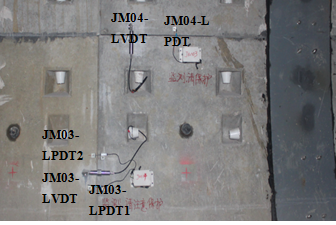Tunnel is often subjected to the longitudinal variation of soil strata, i.e., a tunnel might cross different kinds of strata in the longitudinal direction. Meanwhile, the variations are also inevitable, along the longitudinal direction, in the loading from ground structures, loading from nearby construction, and dynamic loading from trains during the operation period. These factors can lead to various tunnel performance problems, such as longitudinal differential settlement, segment crack and/or damage, and leakage in tunnel, which, in turn, can result in the reduction of the structure safety and serviceability of tunnels. To investigate how the structure safety and serviceability (termed performance) of a tunnel is affected by these factors, a series of researches, as summarized below, were conducted, and the research results have been applied to Shanghai metro tunnels, Suzhou metro tunnels, and the Shanghai Yangtze river highway tunnel.
1) The longitudinal variation of soil strata. The stochastic behavior of strata was analyzed through the use of geology statistics theory and Markov chain model; based upon the limited site exploration data, the transition matrix of soil parameters and/or strata was derived first, and then, a forecasting model considering the transition behavior of soil parameters and/or strata could be derived.
2) Effect of the longitudinal differential settlement on tunnel circumferential performance. A tunnel analysis model that takes the flattening effect of the longitudinal differential settlement on tunnel circumferential performance into account and a new tunnel segment joint model that based upon the fundamental mechanical behavior of the segment joint were advanced. Further, the circumferential stiffness coefficient of Shanghai shield tunnels was studied using the proposed segment joint model.
3) Random field modelling of the leakage in a tunnel. A random field was employed to simulate the stochastic leakage in tunnels, and further, the effect on the long-term performance of the tunnel structure was assessed.
4) Smart monitoring of the longitudinal performance of ultra-long tunnel structures. A smart and robust micro-electro-mechanical system (MEMS) that could monitor the deformation, segment crack and/or damage, and leakage in tunnel was advanced first; and then, the laying techniques and computation theories of the robustness-based wireless sensor network (WSN), which was especially developed for ultra-long tunnel structures, were investigated.
Objective
1) To reveal the performance evolution of ultra-long tunnel structures; and 2) to advance corresponding tunnel performance predicting model and smart monitoring system.
Approach
Uncertainty analysis methods, model tests and field tests were simultaneously adopted herein to study the performance evolution and smart monitoring of ultra-long tunnel structures.
Significant Results and Potential Impact
1) The longitudinal variation of strata could be efficiently addressed based upon limited site exploration tests; 2) the longitudinal deformation model of shield tunnels in soft clays was analyzed and the longitudinal design methodology of shield tunnels was explored; and 3) a smart and robust tunnel performance monitoring system, which was based upon MEMS and WSN techniques, was developed.
Principal Investigator:
Hongwei Huang, Dongmei Zhang, and Jie Zhang.
Funding
National Natural Science Foundation of China (51278381), National Natural Science Foundation of China (51278379), National 973 Basic Research Program of China (2011CB013800), Shanghai Outstanding Academic Leaders Program of China (12XD1405100), and Shanghai Natural Science Foundation of China (12ZR1433600).
Key Publication
(1) Huang X, Huang H, Zhang J. Flattening of jointed shield-driven tunnel induced by longitudinal differential settlements. Tunnelling and Underground Space Technology. 2012, 31: 20-32.
(2) Huang Hongwei, Xu Ran, Zhang Wei. Comparative Performance Test of an Inclinometer Wireless Smart Sensor Prototype for Subway Tunnel. International Journal of Architecture, Engineering and Construction. 2013, 2(1): 25-34.
(3) X. Huang, H.W. Huang, D.M. Zhang. Centrifuge modelling of deep excavation over existing tunnels. Proceedings of ICE: Geotechnical Engineering, 2013: 1-16.
(4) D. M. Zhang, L. X. Ma, H. W. Huang, J. Zhang, Predicting Leakage-induced Settlement of Shield tunnels in Saturated Clay. Computer modeling in engineering and sciences. 2012, 89(3), 163-188.

Fig. 1. Markov chain model for predicting the strata variation

Fig. 2. Flattening effect caused by tunnel longitudinal differential settlement

Fig. 3. Longitudinal deformation of shield tunnels

Fig. 4. WSN-based tunnel performance monitoring and the opening of segment joint



